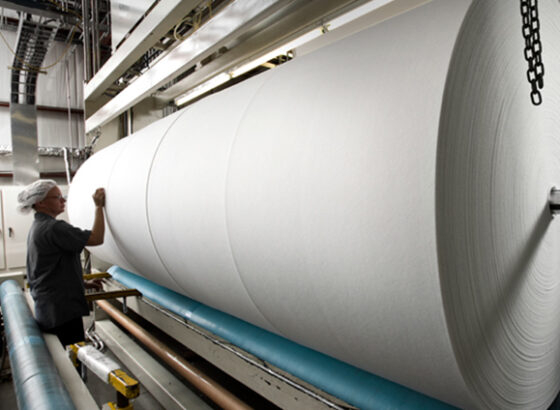Common Questions About Rotary Dies for Non-Wovens
These are the most frequently asked questions we receive about rotary dies for non-wovens from converting engineers and manufacturers.
Our rotary dies are engineered to cut and process a wide range of non-woven substrates, including spunbond, meltblown, hydroentangled, carded, and composite webs. We design dies that match your material’s properties and production speeds, whether you’re converting single-ply filtration material or layered hygiene products.
Non-woven webs are prone to static buildup, especially during high-speed cutting. We recommend integrating anti-static bars and grounding systems, along with precision die coatings that reduce friction. Our dies can also be designed with static-dissipating components as part of a custom rotary die solution.
Clean, burr-free edges are essential in hygiene and medical applications. We offer dies with micro-polished blade profiles, controlled shear angles, and specialty coatings that ensure smooth cuts without fiber fray, helping maintain product integrity and compliance with industry standards.
Yes. We design dies that complement ultrasonic bonding systems and accommodate microperforation patterns for breathability and fluid control. Now supported with ICD’s legacy in precision tooling, you can be assured these advanced features integrate seamlessly into your converting line.
Equipment Compatibility for Rotary Dies
These are the most frequently asked questions we receive about rotary dies for non-wovens from converting engineers and manufacturers.
In most cases, yes. Our dies are engineered to retrofit into a wide variety of converting systems. During consultation, we assess your line specs, including web width, roll diameter, and tension control, then recommend dies that drop in with minimal disruption.
We support rotary presses, in-line web presses, and custom die stations commonly used in non-woven production. We can tailor the die geometry and materials to achieve optimal compatibility and output, whether your press operates in intermittent or continuous motion, and when necessary, we can support retrofits through rebuilding services.
Depending on your material and application, we may suggest slight press adjustments to ensure optimal die performance. These may include adjustments to nip pressure, die speed, or anvil gap calibration. Our engineering team provides comprehensive guidance during integration.
Rotary Die Maintenance for Non-Wovens
Rebuild frequency depends on run volume and material abrasiveness. For standard non-woven applications, we typically recommend inspection every 3 to 6 months and full rebuilds annually or as edge wear becomes apparent. Partnering with ICD, the rebuild process extends die life and restores original performance. Learn how our die rebuilding services help converters minimize downtime.
Common indicators of wear include frayed edges, incomplete cuts, web tearing, and increased material drag. Regular die performance testing is crucial for identifying these issues early. Because non-wovens can compress or stretch, even slight misalignments or blade dullness can cause production issues, making regular inspection and evaluation crucial.
Still Have Questions About Non-Wovens?
Our experts specialize in rotary tooling for non-woven converting, from custom die design to troubleshooting material compatibility. Browse our full Non-Wovens Industry page or connect directly with an engineer below.
